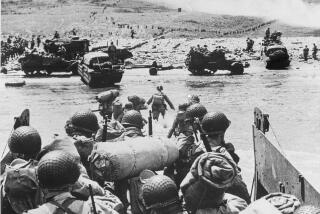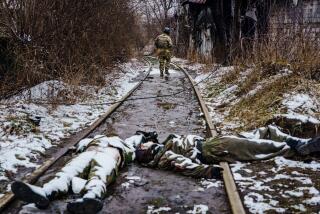THE FINAL CURTAIN : Footprints : World War II
On June 22, 1941, more than 3 million German troops invaded the Soviet Union in a lightning attack, drawing the Red Army into World War II. The war destroyed most of the nation’s industry and took more than 20 million Soviet lives. But Soviet forces played a decisive role in ending Hitler’s aggression--and also managed to establish Soviet control over Eastern and Central Europe, laying the foundations for its status as a superpower. Some milestones of the war:
NAZI-SOVIET PACT:
Signed in August of 1939, it enabled the Soviets and Germans to invade foreign territories without interference. Areas invaded by the Soviets included eastern Poland, Finland, Bessarabia and the Baltics.
SIEGE OF LENINGRAD:
German forces surrounded the city in September, 1941, and laid siege to the former capital for 900 days, causing massive starvation. However, they were never able to force its citizens to surrender.
BATTLE OF STALINGRAD:
(August, 1942 - January, 1943) After five months of fierce fighting, with most of the city destroyed, the German Sixth Army was defeated and forced to surrender, marking the turning point in the war in Europe. From that moment on, the Nazis assumed a defensive posture, and their defeat became just a matter of time.
TANK BATTLE OF KURSK:
In July of 1943, the Soviets were able to defeat the Germans at their own game--mobile armored warfare--in one of history’s greatest tank battles.
YALTA CONFERENCE:
In February, 1945, Franklin D. Roosevelt, Winston Churchill and Josef Stalin met to outline a postwar settlement--particularly the boundaries of Europe. After Yalta, the Red Army advanced into Hungary and Austria and by April had begun its final assault on Berlin.
WAR WITH JAPAN:
Months after war in Europe was concluded and two days after the American atomic attack on Hiroshima and Nagasaki, Stalin declared war on Japan. This action enabled him to lay claim to Chinese and Japanese property and territory after the war.
More to Read
Sign up for Essential California
The most important California stories and recommendations in your inbox every morning.
You may occasionally receive promotional content from the Los Angeles Times.










